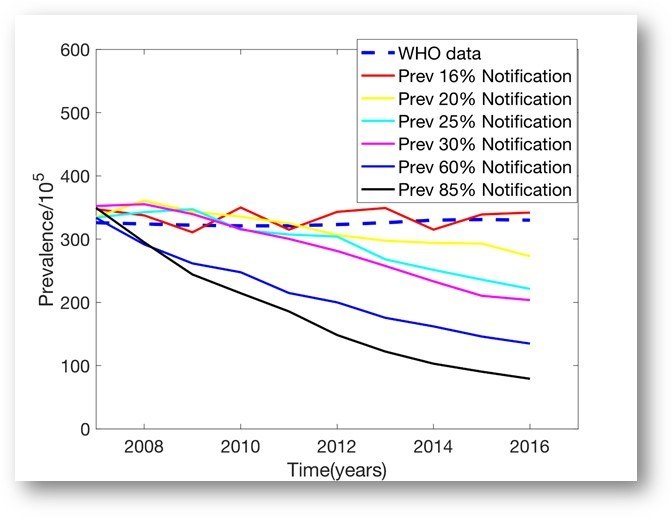Nura Mohammad Rabiu Ahmad defends his thesis on the epidemiological modeling of turberculosis in Nigeria
Jul 21, 2020
Student Nura Mohammad Rabiu Ahmad virtually defended her thesis co-directed by Clara Prats and Daniel López on July 20. The thesis entitled “Multiapproach computational modeling of tuberculosis. Understanding its epidemiological dynamics for improving its control in Nigeria ",
Tuberculosis (TB) is the infectious disease that has caused the most deaths in human history. There are currently more than 10 million new cases of TB each year and it causes more than 1.5 million deaths annually, according to World Health Organization estimates. Nigeria, with a persistent incidence of about 219 cases per 100,000 population in 2019, is among the 8 countries that accounted for two-thirds of new cases of tuberculosis in 2018. Disease control in this country is coordinated by the National Tuberculosis and Leprosy Control Program (NTBLCP). Despite the efforts, the estimated prevalence is the same as estimated in 1990. Models can be used for a more accurate diagnosis of the TB situation in certain territories, as well as to assist in the design and evaluation of actions. control.
In this project, two modeling strategies have been used to do this. First, a top-down strategy at the country level (Nigeria) through the design, testing and adaptation of various SEIR-type models, with the aim of providing an overview of the situation and quantifying some of the most relevant parameters. Second, a bottom-up strategy studying a smaller area, Gombe State, by designing, testing, and adapting an agent-based model (ABM). The purpose of the ABM model is to understand in detail the particular situation of the State of Gombe and to assist in the design and quantification of possible control actions. Fieldwork was also conducted to look for the particular socioeconomic factors responsible for the epidemiological situation of TB; statistical analysis of the data obtained is the third working strategy of this project.
The top-down model approach confirmed a very low notification rate ranging from 16 to 20% during the years analyzed (2000-2010). This factor was revealed to be the bottleneck for disease control in this country. The model predictions did not show relevant effects of control actions without a previous increase in the notification rate. The fieldwork was designed in coordination with local NTBLCP authorities with the goal of analyzing the socioeconomic factors that condition this notification rate in Gombe state. It consisted of an initial collection of epidemiological data, followed by a set of 52 interviews with TB patients from different health centers. The data obtained and the results of the interviews were analyzed using inferential statistics and Anova, with the help of machine learning techniques. The results were devastating: none of the patients interviewed knew about the symptoms of TB and 90% did not know the mechanisms of TB transmission after talking to health care workers. The average delay in diagnosing patients was 9.6 weeks, and only 10% of respondents went to the doctor during the first month of feeling sick.
The methodology using different strategies used in this project has been shown to be a robust way to tackle the real problem. It has made it possible to provide a global and detailed picture of the situation of TB in a given area, to relate the parameters and results of the model to a real socio-economic context and to generate a useful tool to help in the design and evaluation of actions. TB control.

Share: